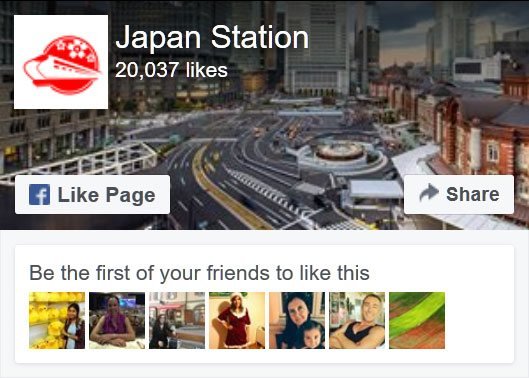The National Museum of Nature & Science is a museum of technology and natural history which is located in the north-east corner of Ueno Park. This museum traces its own history back to an exhibition at the Confucian temple of Yushima Seido in 1871, but the official date for its establishment in Ueno is 1877.
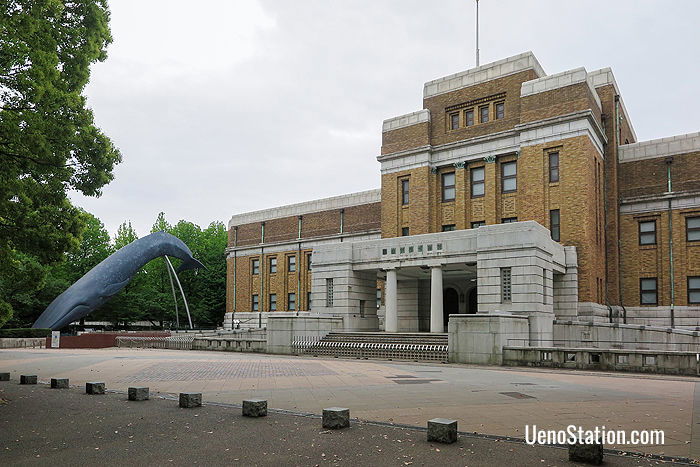
Entrance to the National Museum of Nature & Science is through the Japan Gallery building
Today the museum has outstanding facilities which provide a comprehensive guide to the history of life on earth and to the history of science and technology. There are two buildings in the museum which are organized on separate themes. These buildings are called the Japan Gallery and the Global Gallery and they house an incredible array of varied and compelling exhibits.
There is a lot to see at this museum and you could easily spend half a day here exploring all the fascinating exhibits. To help you find your way around there are English language brochures available at the entrance which have guide maps for both buildings. There are also interactive touch screen panels throughout the museum which give information on the exhibits in English, Chinese, Korean, and Japanese.
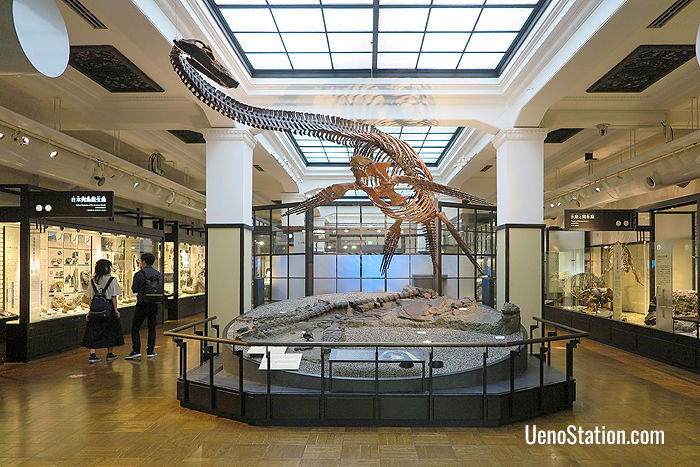
A reconstructed Futabasaurus skeleton. Fossils of this dinosaur were first discovered by a high school boy in Fukushima in 1968
The Japan Gallery
The Japan Gallery is an elegant Neo-Renaissance style building that was completed in 1931. Clearly visible in this building’s floor plan is that it was built in the shape of an airplane, because that represented state-of-the-art technology at that time. Today the building is a nationally designated Important Cultural Property.
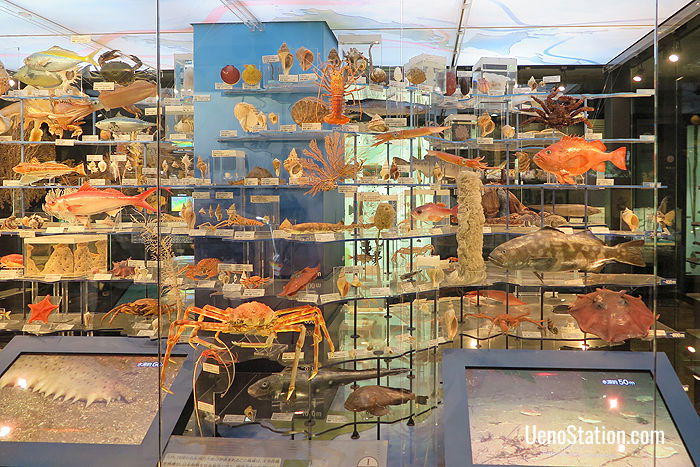
Marine life of the Japanese islands
The Japan Gallery is organized on the theme of “The Environment of the Japanese Islands”. Here, over three floors, you can view exhibits on the nature and history of Japan, the process by which the modern population of Japan was formed, and the history of the relationship between the Japanese people and nature.
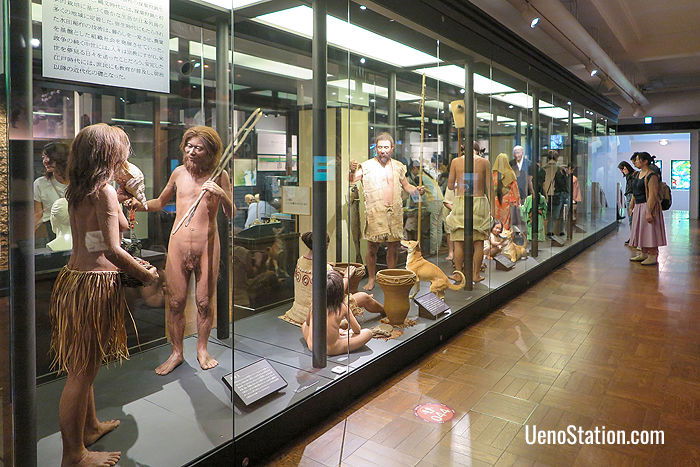
Japanese people from prehistoric times to the present
There are displays showing Japan’s geological history, its flora and fauna, and how human culture developed in Japan’s unique environment.
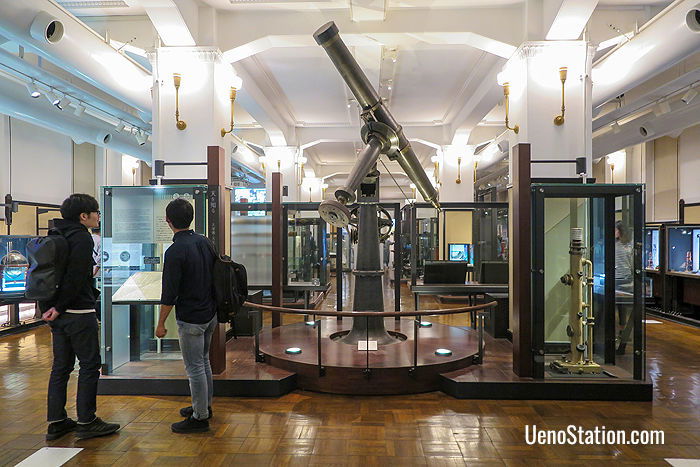
Tools and instruments used to observe nature
There is also a section devoted to Japanese technology used for scientific observation of natural phenomena. These include clocks, watches, telescopes, microscopes, globes, and seismographs.
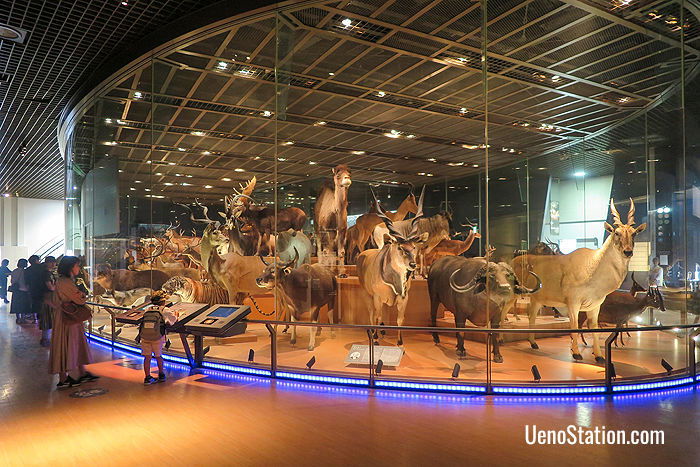
Animals of the Earth exhibit on the 3rd floor of the Global Gallery
The Global Gallery
The theme of the Global Gallery is “The History of Life on Earth” and it consists of a series of impressive displays showing the evolution of life, the development of human culture, and the history of human ingenuity in the fields of science and technology.
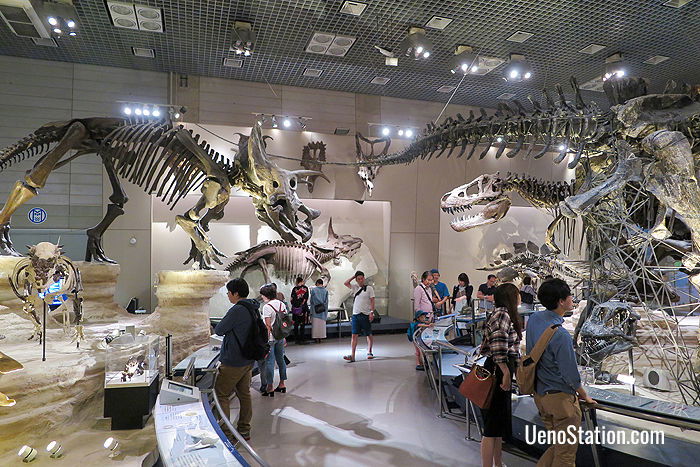
The dinosaur display in the Evolution of Life section
Galleries in the B1 and B2 basement levels show the evolution of all life from the dinosaurs to human beings, and shows how different plants and animals have adapted to changing environments.

Exhibits depicting the evolution of human beings
A circular animated screen on the 1st floor depicts 13.8 billion years of history from the origin of the universe in the Big Bang to the development of contemporary society.
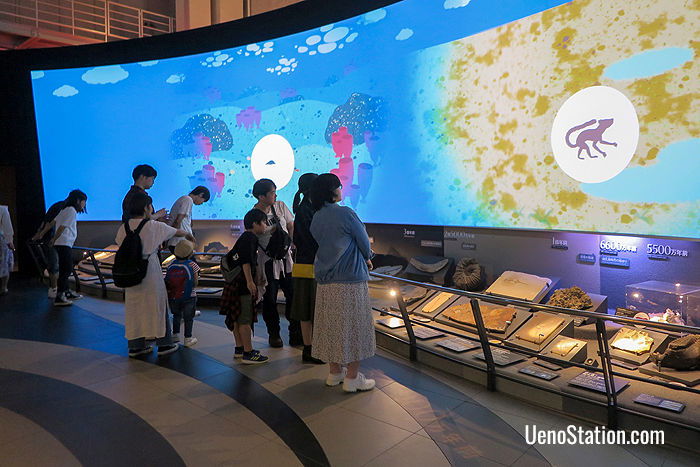
Animated screens depict the origins of the universe, the history of life, and the development of human civilisation
The 2nd floor has many interactive displays showing state-of-the-art technology which is used to study the natural phenomena of the world.
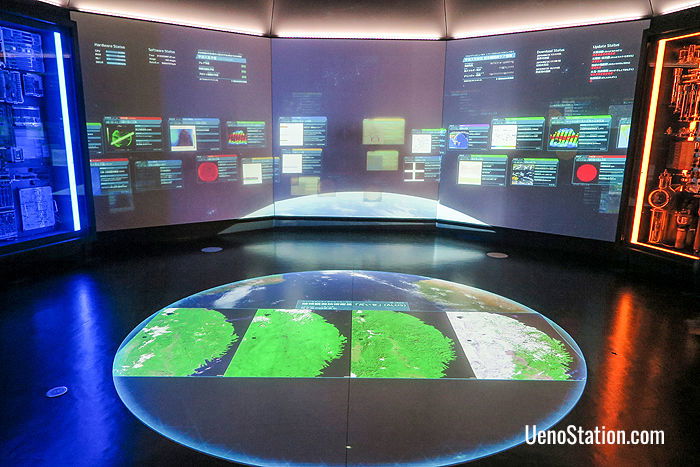
The Global Environment Detector on the 2nd floor
There is also a section on the second floor devoted to Japanese inventions from the Edo period to the present day. This includes examples from the automotive and aviation industries and the modern space age era.
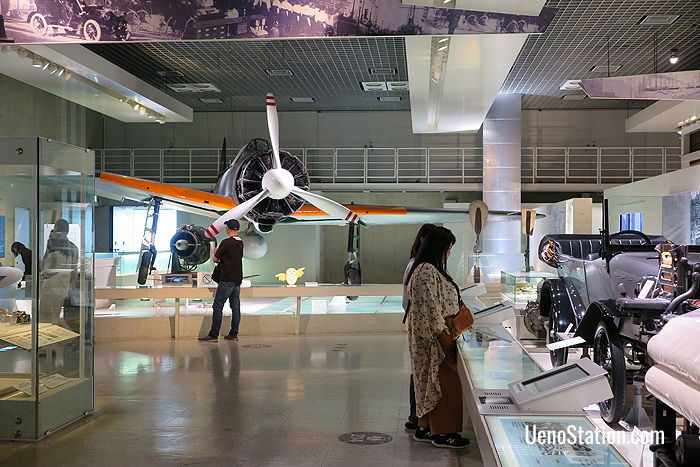
Progress in Science & Technology on the 2nd floor
There is an interactive play area for children aged 4-6 on the 3rd floor. This area is called ComPass and is designed to be a fun playground that stimulates children’s minds. ComPass is free to enter for children and their adult guardians, but admission tickets should be obtained from the Global Gallery Information Desk on the 1st floor.
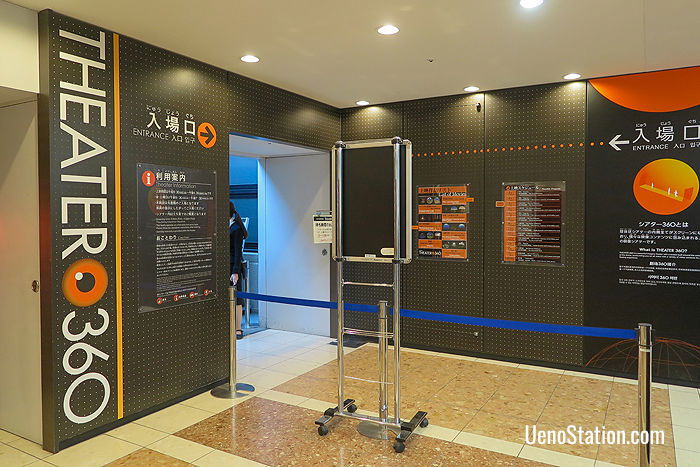
The entrance to Theater 360
Theater 360
Theater 360 is located in the basement (B1) level of the Japan Gallery. Here viewers stand on a bridge in the center of a large spherical movie screen for a fully immersive, three dimensional, 360° video show. Different videos are shown each month and include such topics as the last dinosaurs, the evolution of humanity, the story of the universe, and an exploration of the deep sea. Two videos are shown each time and they last about 10 minutes each.
Exterior Exhibits
There are also some exterior exhibits that are worth looking out for. The life-sized 30 meter statue of a blue whale stands at the entrance to the museum. The blue whale is the world’s largest living animal and the statue depicts it diving beneath the ocean surface.
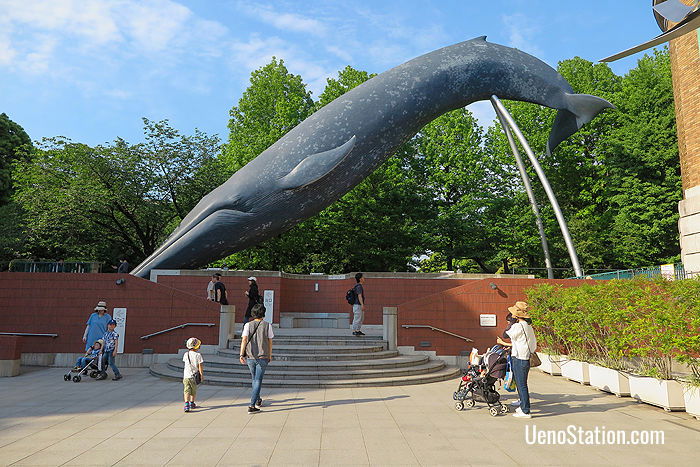
The blue whale makes a dramatic impression at the front of the museum
There is a D51 class steam locomotive on the south side of the museum that was built in 1939 and remained in service until 1975.
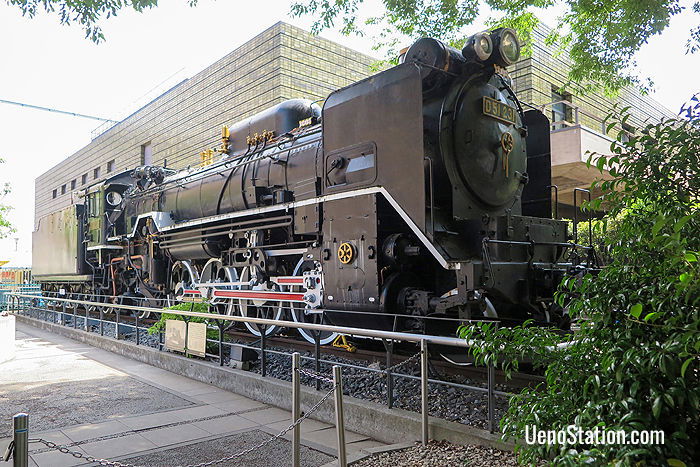
The D51 class steam engine
At the back of the Global Gallery is the actual rocket launcher that put Japan’s first artificial satellite into space in 1970.
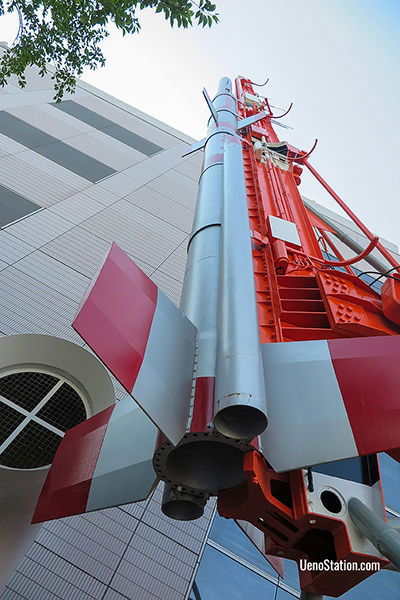
The Lambda rocket launcher
Information & Facilities
There are information desks on the basement (B1) level of the Japan Gallery and the 1st floor of the Global Gallery. Audio guides are available in English, Chinese, Korean and Japanese. They can be rented for 310 yen from a counter on the B1 level of the Japan Gallery which is located beside the Museum Shop. There are also tablet guides which provide text and audio commentary, videos, and maps. These also cost 310 yen to rent and can be obtained at the same counter. Coin lockers are also located in the B1 level of the Japan Gallery.
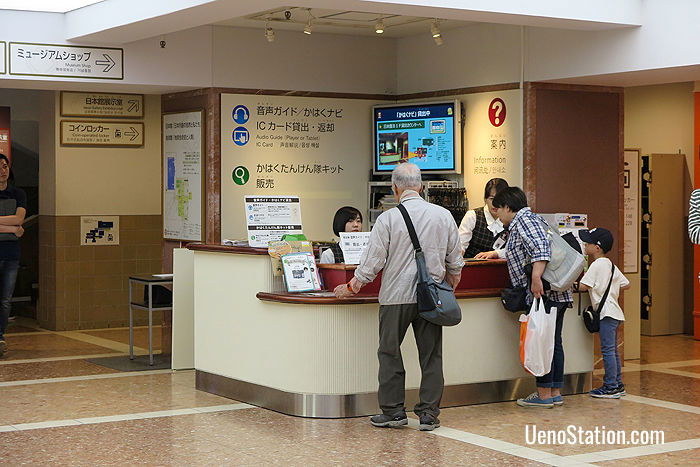
The Audio Guide Counter
The Museum Shop is located on the B1 level of the Japan Gallery. It has a great range of souvenirs including books, toys, figurines, science kits, stickers, T-shirts, posters, and stationary.
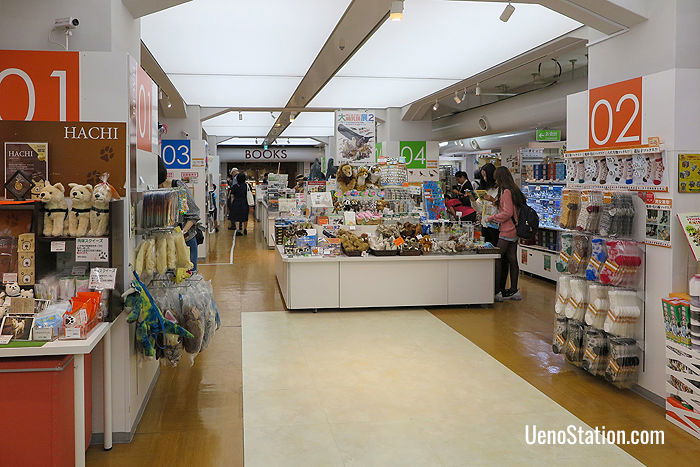
The Museum Shop
There is a large lounge on the B1 level of the Japan Gallery with plenty of seating and soft drinks vending machines. Attached to this space is a small café which serves light meals such as curry, spaghetti, or hamburger steak with rice.
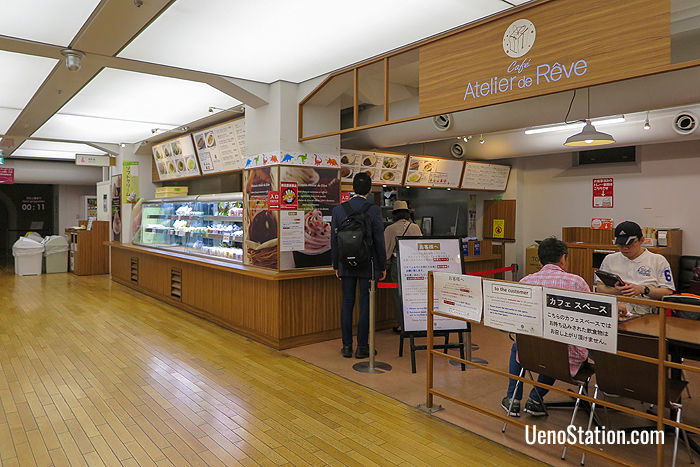
The museum café
There is a restaurant on the Mezzanine (M2F) of the Global Gallery which can be accessed from the 1st floor. This restaurant serves fish and meat dishes with rice or bread, light meals such as curry or pasta, and a range of desserts. The Global Gallery also has a rooftop terrace with seating and a kiosk selling hot and cold beverages, including beer after 12.00 noon.
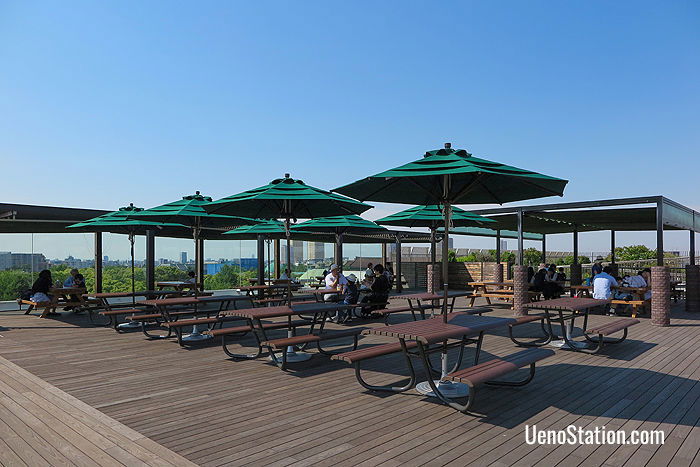
The rooftop Sky Deck
The Global Gallery also has a rooftop herb garden which features over 150 medicinal, edible, and aromatic herbs.
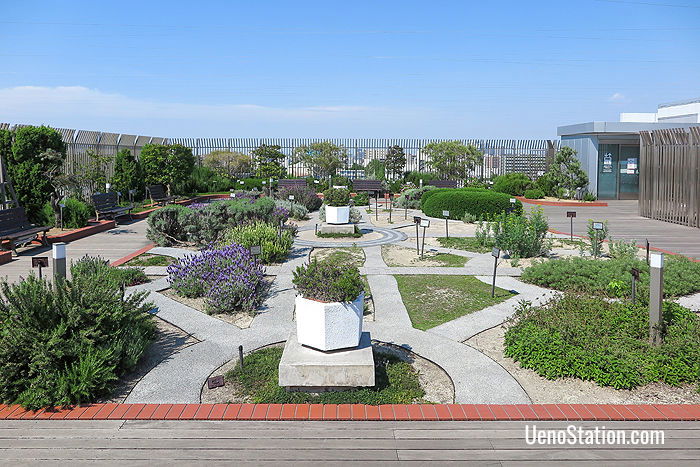
The herb garden
Location
The National Museum of Nature & Science is located inside Ueno Park. It is a 4 minute walk from the Park Exit of JR Ueno Station, an 8 minute walk from Keisei Ueno Station, and 7 minutes from Ueno Subway Station on the Tokyo Metro Hibiya and Ginza lines.
Admission:
Adults: 620 yen
Children (under 18) & Seniors (over 65): Free
People with Disabilities & their Attendants: Free

A touch screen ticket machine
Opening Hours:
Sunday & Tuesday – Thursday: 9.00 – 17.00 (Last entry: 16.30)
Friday & Saturday: 9.00 – 20.00 (Last entry: 19.30)
Closed: Monday (except national holidays when it closes on the following Tuesday instead), and from December 28th – January 1st, and for 5 days in the 4th week of June for annual maintenance.
Article and original photos by Michael Lambe. All rights reserved.
